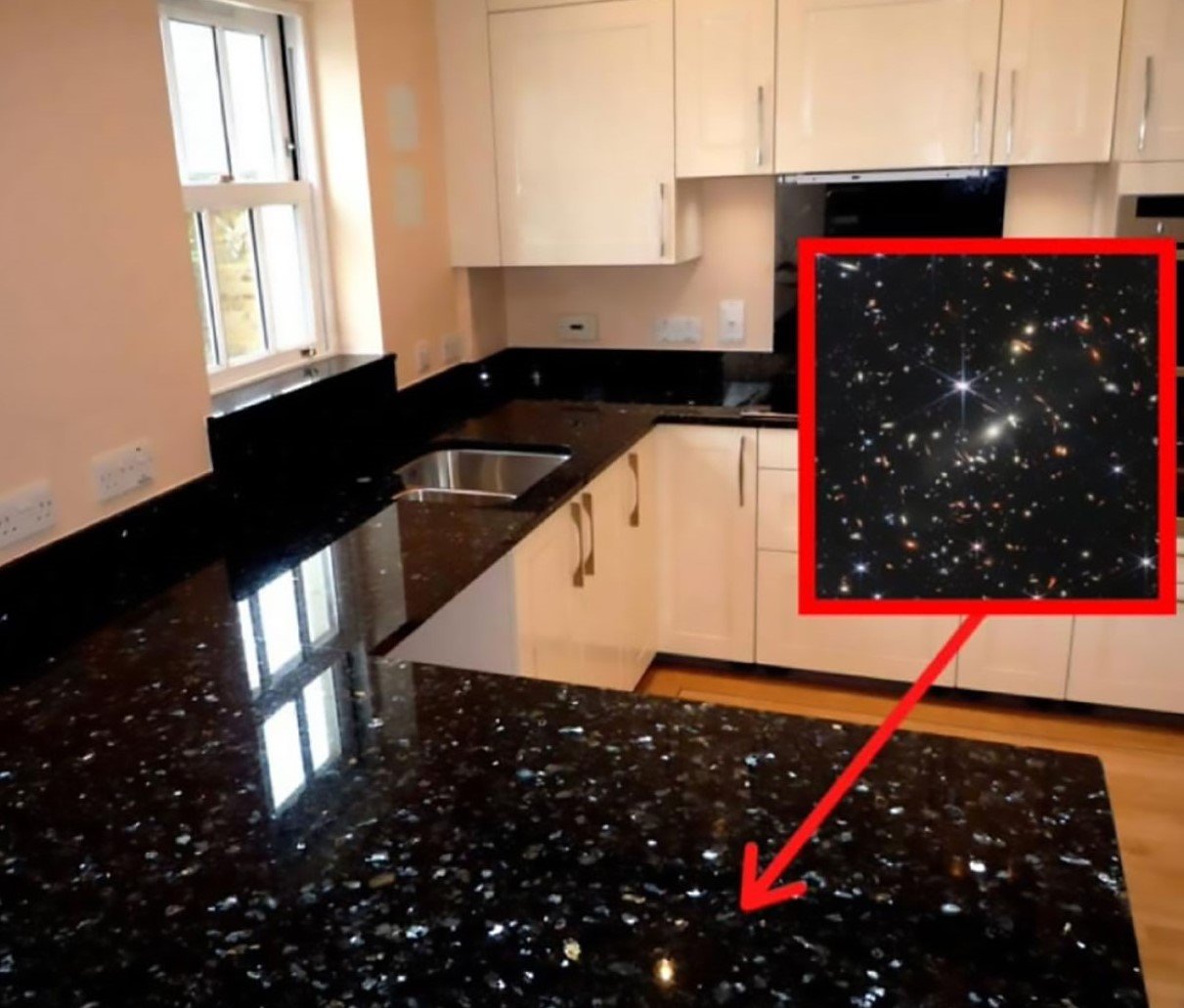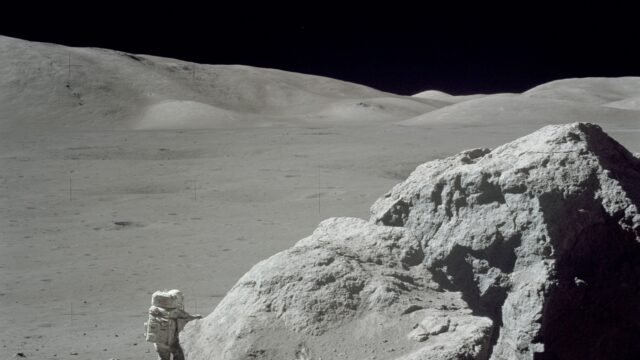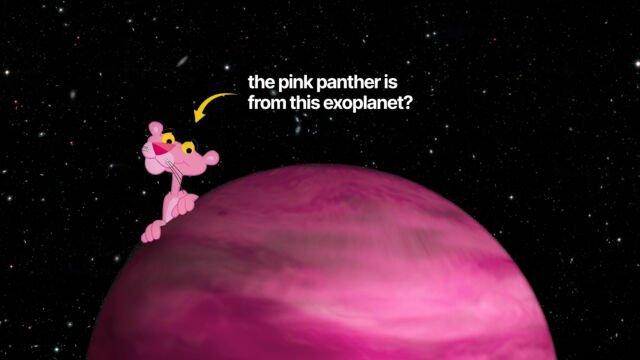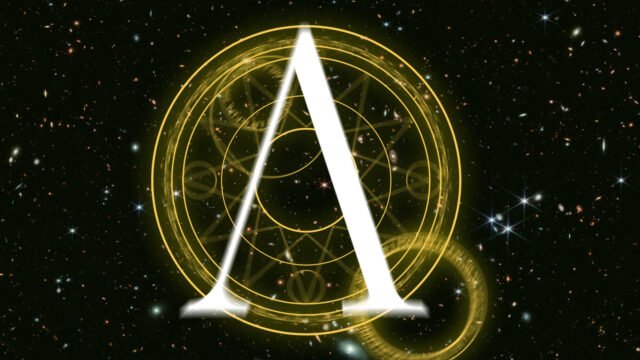On a mission to #UnfoldTheUniverse, the largest space telescope in history called the James Webb Space Telescope (or JWST) was launched on 25th December 2021 with the hope to allow us to peer deep into space, clearer than ever before.
Years of planning, hours of engineering, and tons of sleepless nights are what has gone into creating a possibility to observe and capture the spectacular universe shredded to its finest detail.
Well, the wait is finally over!
On 12th July 2022 (10:30 AM EDT), NASA unveiled the first set of images captured by the JWST, one (also the first) of which happens to be the deepest and sharpest infrared image of the universe in the history of astronomy.
Accomplishing the first of its five targets acquired, JWST captured a “massive” galaxy cluster called SMACS 0723, situated about 4.6 billion light years away from us.
Not just that, NASA revealed several more shots of the cosmos that show us how exceptionally capable the telescope is.
Everything that the JWST has captured by far is oozing with a titanic of astronomical information.
Stick around as we unfold each image in this article and the meaning behind them, but it gets only better with some prerequisite of the machinery itself (feel free to skip to the Images Captured by JWST).
What is the James Webb Space Telescope?
James Webb Space Telescope (JWST) is an infrared telescope designed to conduct a range of observations, from the formation of early galaxies and stars to studying exoplanets; understanding the unfolding of the universe on its way.
It is a premier space facility for astronomers around the world as it enables them to witness the most unseen elements of the universe, owing to the large aperture and cutting-edge technologies used in the fabrication of its instruments.
Alongside its gigantic mirrors and sun shield, the telescope consists of four major instruments, which are:
- Mid Infrared Instrument (MIRI) – It has both a camera and a spectrograph that sees light in the mid-infrared region of the electromagnetic spectrum that is too faint for our eyes.
- Near-Infrared Camera (NIRCam) – It is the James Webb Telescope’s primary imager that will cover the infrared wavelength range of 0.6 to 5 microns.
- Near-Infrared Spectrograph (NIRSpec) – It is a spectrograph (also called a spectrometer) used to disperse light from an object into a spectrum, which is then used to analyze elements present in observed celestial bodies.
- Near-Infrared Imager and Slitless Spectrograph/Fine Guidance Sensor – It allows Webb to focus precisely on its target (like an aimbot) so that it can obtain high-quality images.
JWST is currently orbiting the L2 point (L stands for Lagrange) in space, which is the sweet spot for the telescope, located about 1.5 million kilometers away from our planet.
Its position has been set in a way so that it could block most of the sunlight and background noise.
Since the JWST instruments are sensitive to heat and noise, they have to maintain extremely low temperatures to work (about -266°C to -268°C).
After the nail-biting sequence of the unfolding and deployment of the JWST, it started calibrating its instrument for science missions.
It spent the next 5 months cooling down the NIRCam and MIRI to meet the requirements of its missions.
To learn more about JWST and space telescopes, we recommend you to read Everything About the James Webb Space Telescope.
Images Captured by JWST
JWST took its first shot while calibrating its mirrors for maximum accuracy in March.
All mirrors of JWST, facing a star called 2MASS J17554042+6551277, were aligned in such a way that every mirror produced the same image.

We can see that the star has 8 sharp spikes coming out of it. These are called diffraction spikes.
Many people might overlook them for the usual lens flare, but it is quite interesting to note that the six equally spaced bright spikes are caused due to the six sides of the primary hexagonal mirror segment, while the two short horizontal spikes are caused due to the diffraction of light by support strut of the secondary mirror.
We would be seeing these diffraction spikes in pretty much any photo that Webb captures of a star.
If you truly want to appreciate this image, have a look at the image below comparing the resolution of JWST with that of the Spitzer Telescope.

Webb’s First Deep Field
On 12th July 2022, NASA released the first deep field image captured by the James Webb Space Telescope (as a sneak peek), which came to be known as Webb’s First Deep Field (a lazy but beautiful nomenclature).

This illustrative masterpiece is the deepest that this universe has ever been captured.
It is shot by Webb’s Near-Infrared Camera (NIRCam), showing us the massive galaxy cluster known as SMACS 0723.
Fact: In the above image, you’re looking at 4.6 to 13 billion years back in time.
To give you a comparative perspective, below is the image of the same galaxy cluster taken by the Hubble Telescope.


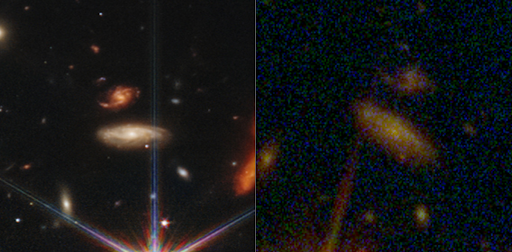
The sensitive eyes of Webb have captured galaxies too far, and thus, too faint for Hubble.
Even the fine spiral structures are visible in Webb’s shot, while in Hubble’s image, they are blurry and smudged out.
Fact: The patch of sky covered in Webb’s First Deep Field is about the size of a single grain held at an arm’s distance.
While the Hubble took weeks to capture the cluster, it took JWST just about 12.5 hours to create this composite by capturing images at different wavelengths.
This explains how big of an improvement JWST is over Hubble.
So, is Hubble really that bad? No.
Not to mention, this is only to highlight the perfections that the JWST brings along, and not to belittle Hubble, which is an amazing telescope in itself.
We have had nearly a ton of space telescopes that have facilitated our observation of the universe at different wavelengths and scales, and we’re all set to bring many more in the future.
Nonetheless, what in the world does not need improvement?
Ultimately, science is all about progress; one thing after the other – advancements over advancements.
That is why Webb is here until something more phenomenal (just imagine, what could be better than this) becomes its successor.
Coming back to the image, a very important phenomenon that can be observed herein is gravitational lensing.
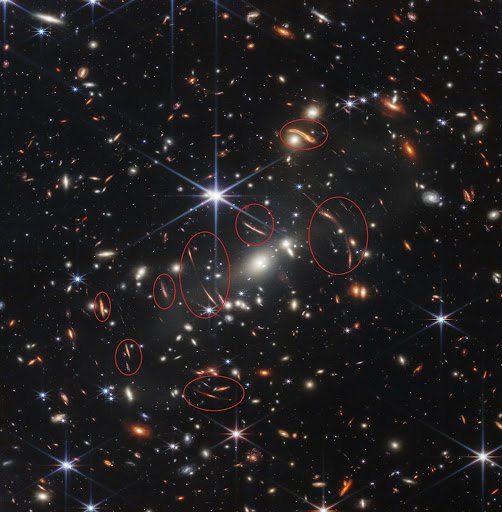
Notice how the circled galaxies, despite being normal, look distorted and bent. It is an effect caused due to the bending of light around the massive object.
The three galaxies (grouped in a triangle) to the right of the bright star in the center (or foreground) are part of SMACS 0723.
The light coming from other galaxies, which are far away, is bent around by the massive galaxies of SMACS 0723 in the foreground, which is why the distant galaxies appear to bend and distort.
This phenomenon of bending of incident light (usually from a distant body) around massive objects (usually closer to us) is called gravitational lensing – clear evidence of Einstein’s theory of general relativity.
Stephan’s Quintet
Next up is Stephan’s Quintet – a group of 5 galaxies also collectively known as Hickson Compact Group 92 (HCG 92).
Although it is called a quintet, only four of the galaxies (NGC 7317, NGC 7318B, NGC 7318A, and NGC 7319) are close enough.

The fifth galaxy at the bottom (NGC 7320), which is also an active star-forming region, happens to be the brightest fellow in the picture and is somewhat separated from the other four.
The leftmost galaxy in the image is pretty close to us, comparatively at least.
Their tails of gas, dust, and stars can be seen being pulled off due to their gravitational interactions.
This breathtaking view, showcasing four galaxies caught together in a cosmic dance, covers an area corresponding to one-fifth of the moon’s diameter.
Fact: The image of Stephan’s Quintet is the largest picture captured by JWST so far.
However, what you just saw is actually the NIRCam-captured image of Stephan’s Quintet overlaid with what the MIRI saw in the group.
Webb’s powerful mid-infrared vision gazed at the dusty regions of Stephan’s Quintet and presented us with this fine imagery.

Webb’s MIRI shows us the structuring and distribution of dust in the group, which is crucial in understanding the star formation in those galaxies.
The blue regions represent the dustless regions of stars and star clusters, whereas the red regions represent the dusty star-forming neighborhood along with early galaxies covered in thick dust.
You can also spot several other bodies in the image, like the dwarf galaxy (yellowish region) in the center of the leftmost (blue) galaxy, and also the super-bright core of the topmost galaxy that is actually a growing supermassive black hole about 24 billion solar masses.
Studying such nearby galaxies and what they bear help scientists to understand the structure of galaxies and their interactions at such a cosmic scale, which is usually rare as galaxies reside far away from each other.
Below is the image of the same group captured by Hubble.

Looking for improvements? Well, the JWST managed to capture a far more detailed shot with a lot more stars visible in the background.
Southern Ring Nebula
The Southern Ring Nebula, which also goes by names like NGC 3132, Eight Burst Nebula, and Caldwell 74, lies approximately 2,500 light years away.

What you’re seeing is an intense outburst of ultraviole(n)t radiation by a dying star at the center of the planetary nebula, alongside its binary companion, which is in its early stage of stellar evolution – alive and kicking.

The image on the left, captured by Webb’s Near-Infrared Camera (NIRCam), shows the nebula in its full light; whereas, the image on the right, captured by Webb’s Mid-Infrared Instrument (MIRI), brings to light the dying star, which is surrounded by dust – something that was earlier unseen.
As both stars continue to orbit each other, they create disruptions in the surrounding clouds of gas & dust, thus creating asymmetrical patterns.
We can notice distinct shells of the same nebula, these shells are the gases and dust expelled by the dying star at different times; the outer shell was ejected earlier.
Scientists can study each shell for its chemical composition, so that they can trace the history of both the nebula and the stars, along with their structures.

Above is the image of the Southern Ring Nebula captured by the Hubble Space Telescope in 2008.
We can see that the second star is not visible and its overall shell structure is not well defined, both of which have been rectified in the new image.
Atmospheric Spectrum of Exoplanet WASP-96b
Besides photographing nebulae and galaxies, JWST also observed an exoplanet called WASP-96b, located about 1,150 light years away, and studied its atmosphere.
WASP-96b is a Jupiter-sized planet but is ironically half as massive. It is located at a distance of 0.043 AU from its host star WASP-96 and takes about 3.4 days to cover a full orbit.
Since it is very close to its star, it has a temperature of more than 1000°F.
On 21st June 2022, Webb’s Near-Infrared Imager and Slitless Spectrograph (NIRISS) measured the light coming from the WASP-96 system for 6.4 hours, while the planet was moving across the star.
It resulted in the dimming of the starlight giving us a light curve of the transit.
The spectrum of light reveals the change of brightness of infrared light between 0.6 to 2.8-micron wavelength.

This unveiled the unambiguous presence of water and evidence of clouds in its atmosphere, which weren’t thought to exist in previous observations by other missions.
The spectrum measured by the NIRISS is the most detailed near-infrared transmission spectrum of an exoplanet ever recorded.
It also covers visible red lights and wavelengths longer than 1.6 microns, which was not accessible to previous missions.
This wavelength is critical to water molecules, oxygen, methane, and carbon dioxide.
Carina Nebula
Carina Nebula or Eta Carinae Nebula, cataloged as NGC 3372, seems no less than a landscape of a mountain valley glittered with stars. See for yourself!

One can stare at those minuscule details for hours and still not get enough.
The particular section of the nebula that can be seen in the image above is called NGC 3324 and is the northwest corner of the Carina Nebula located at a distance of 7200 light years.
The Carina Nebula is a dusty nursery of stars loaded with hydrogen gas along with all the heavier elements that have been introduced in the outbursts of the stars that have died in those regions.
Below is the image of the same section of the Carina Nebula that was captured by Hubble in 2008.

We can spot clear differences in the resolution and sharpness of both of these images.
The infrared light of the hidden stars could never make it to Hubble’s vision.
JWST now uncovers the stars for us that were previously hidden behind this cosmic cliff and shows them in their full glory.
Many stars are still forming in this stellar nursery and the UV radiation from those young stars can be seen coming out of the nebula.
The radiation resembles vapors arising from the nebula, these vapors are ionized gases and hot dust, which gradually erode the Nebula.
Since the infrared vision of the telescope can peer through clouds of dust and gases, we can see the star-forming regions in the nebula.

Out of the visible stars, some are bluish and some yellowish; the stars that appear red are the youngest ones that are still forming.
Images of Jupiter & Moons from the data of JWST’s commissioning period
“Combined with the deep field images released the other day, these images of Jupiter demonstrate the full grasp of what Webb can observe, from the faintest, most distant observable galaxies to planets in our own cosmic backyard that you can see with the naked eye from your actual backyard.”
– Bryan Holler, Scientist at Space Telescope Science Institute in Baltimore
Along with the JWST’s first images, the data from the telescope’s commissioning period also is now being released on the Space Telescope Science Institute’s Mikulski Archive for Space Telescope.
This data from Webb’s commissioning period demonstrates JWST’s ability to track solar system targets and produce images and spectra with unmatched and exceptional detail.
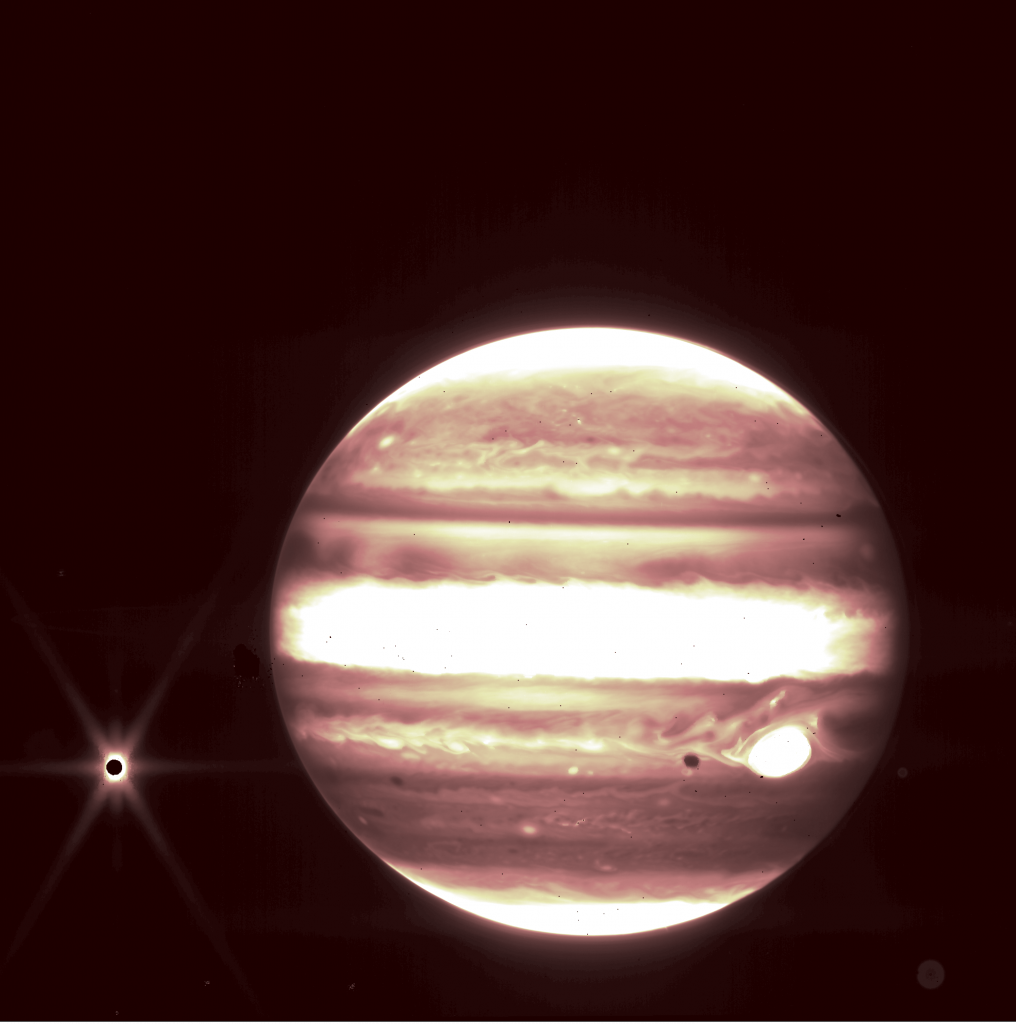
It includes images of Jupiter and spectra of several asteroids captured to test the telescope’s instruments before July 12 when science operations officially began.
Jupiter’s images from the NIRCam instrument’s short-wavelength filter show distinct bands encircling the planet and the giant, stormy Great Red Spot.
The iconic red spot appears white in this image because of the way Webb’s infrared image was processed.
We can see Jupiter’s moon Europa on the left, and the moon’s shadow on the left of the Great Red Spot; everything is crystal clear!
You can also spot other moons in these images like Thebe and Metis.
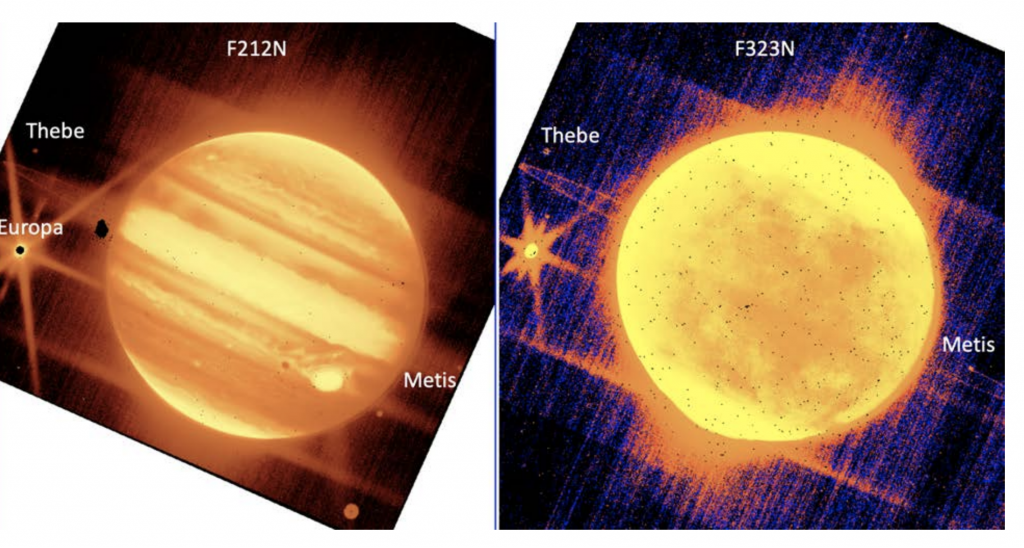
Scientists were looking up to these images because they demonstrate JWST’s capabilities to observe the satellites and rings near bright solar system objects such as Jupiter, Saturn, and Mars.
Astronomers will get to explore whether we will be able to see the plumes of material spewing out of the moons of Jupiter and Saturn; a tempting question as we might be able to learn about the world inside those moons.
JWST was also able to capture Jupiter’s rings easily using its NIRcam long-wavelength filter image; the rings appear distinctly in the images.
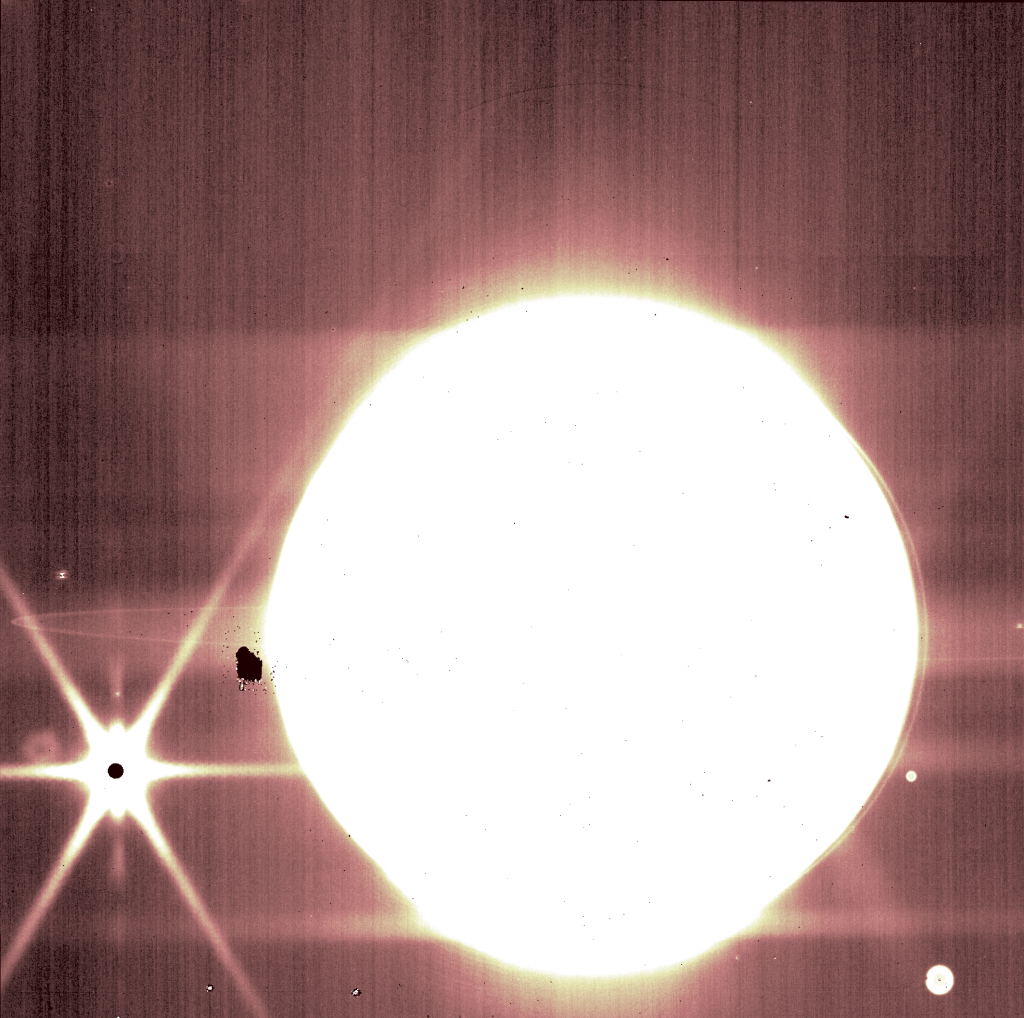
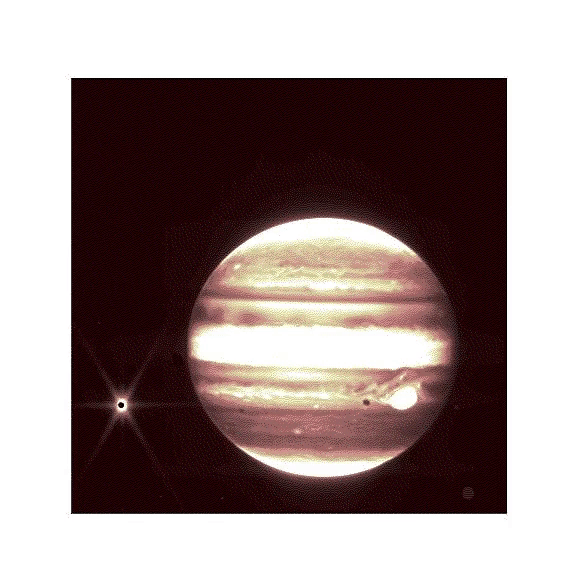
The Webb telescope also obtained these images of Jupiter and Europa moving across the telescope’s field of view in three separate observations.
These observations demonstrated the telescope’s ability to find and track guide stars in the proximity of bright Jupiter.
The JWST was designed to be capable enough to track objects that move as fast as Mars, which has a maximum speed of 30 milliarcseconds per second.
During the commissioning period, JWST used an asteroid called 6481 Tenzing, located in the asteroid belt between Mars and Jupiter, to start the moving-target tracking “speed limit” tests.
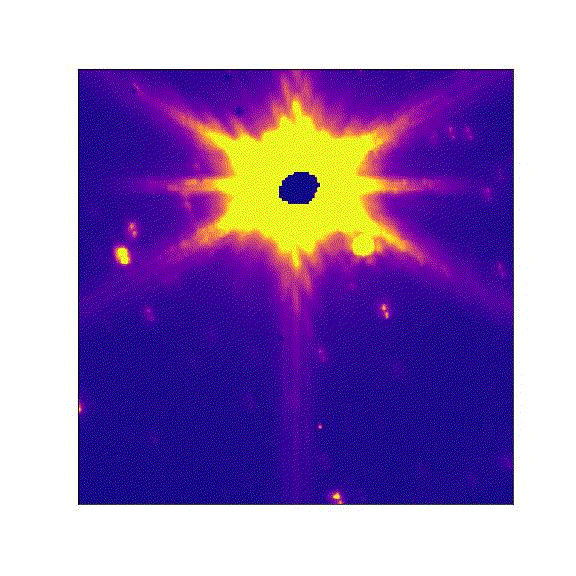
The observations proved that JWST is capable enough to get valuable data with all of the science instruments for objects moving at up to 27 milliarcseconds per second – twice the expected baseline.
It’s similar to photographing a turtle crawling when you’re standing a mile away.
Future of JWST
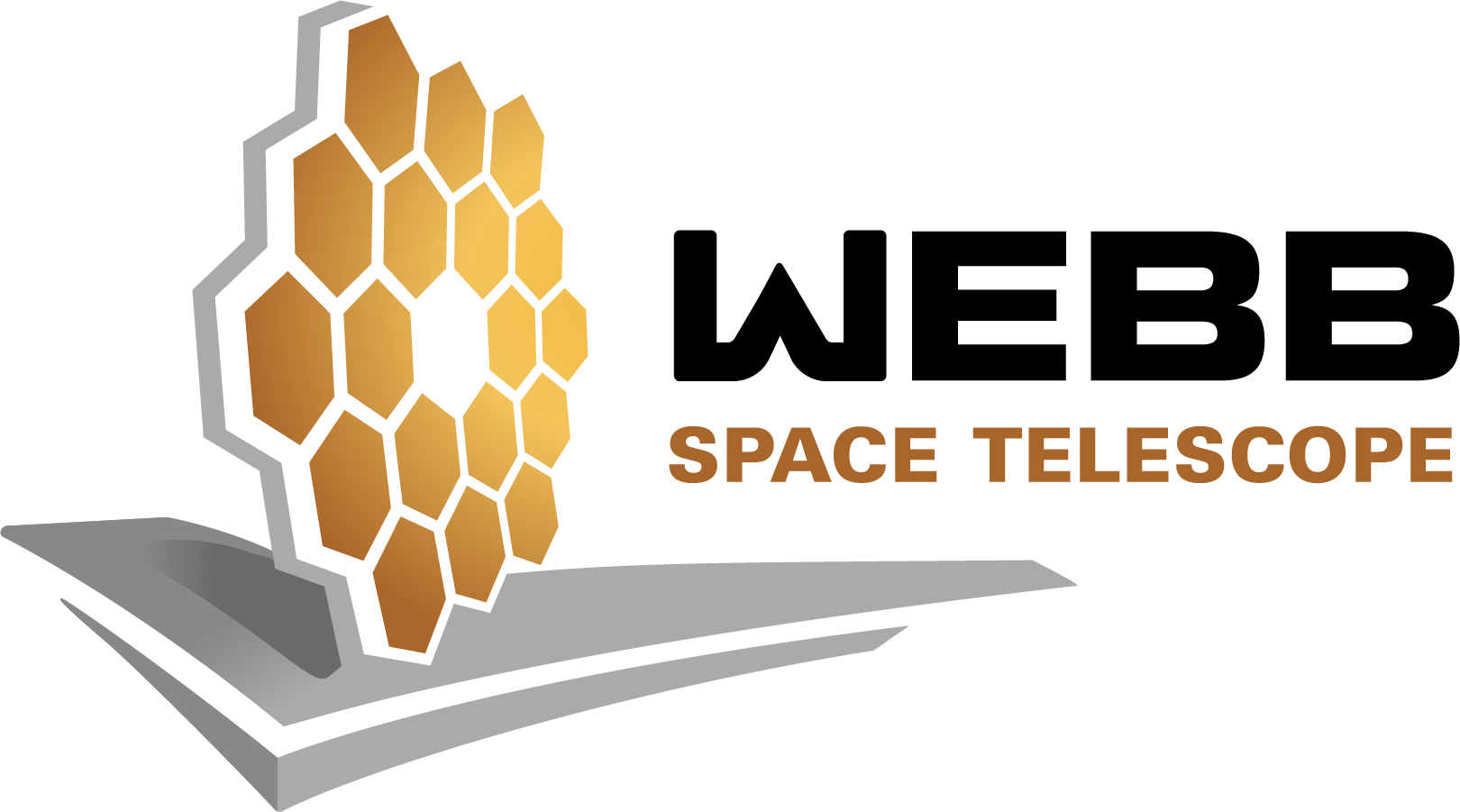
James Webb Space Telescope is one of the most exhilarating space missions to date.
It has marked the dawn of a new era in astronomy, allowing us to dive deeper and farther into interstellar vastness than ever before.
Mission officials have already selected the general observer program for the first year, known as Cycle 1.
It will provide a worldwide community of astronomers with the opportunity to investigate their targets with the James Webb Space Telescope.
Over 1172 proposals were received by officials of Webb but only 266 of them were selected because of limited observing hours.
The mission that is to follow will be able to find the answers to questions like:
- What is the shape of the universe?
- How do galaxies evolve?
- What is the nature of dark matter?
- How did the universe achieve its present composition?
- How do stars and planetary systems evolve?
The future of astronomy is as bright as the brightest quasar.
When Hubble was launched in 1990, the existence of dark energy was unknown to us, whereas now, it is one of the most popular and exciting areas of research in astrophysics.
The images that JWST is likely to capture in the near future could be deeper than Webb’s First Deep Field itself, which is astonishing.
We do not know what would Webb bring along, and to be honest, having seen its remarkable potential, we are not ready for the wonders it is about to unravel.
All we know is that whatever you’ve been reading in this article for the past few minutes is not it, as Webb is not done yet.
Behold for what is yet to come, and until then, embrace the beauty of the universe.
References & External Links
- JWST mirror alignment: https://www.nasa.gov/press-release/nasa-s-webb-reaches-alignment-milestone-optics-working-successfully
- Overview of JWST: https://webb.nasa.gov/content/observatory/ote/mirrors/index.html#:~:text=The%20primary%20mirror%20segments%20and,telescope’s%20tertiary%20mirror%20remains%20stationary.
- Wikipedia: https://en.wikipedia.org/wiki/James_Webb_Space_Telescope#Mission_goals
- All JWST photos and details about them: https://www.nasa.gov/webbfirstimages
- WASP-96b System: https://exoplanets.nasa.gov/exoplanet-catalog/5152/wasp-96-b/
- EO portal JWST: https://www.eoportal.org/web/eoportal/satellite-missions/content/-/article/jwst-content
- Everything about the James Webb Space Telescope (JWST)
